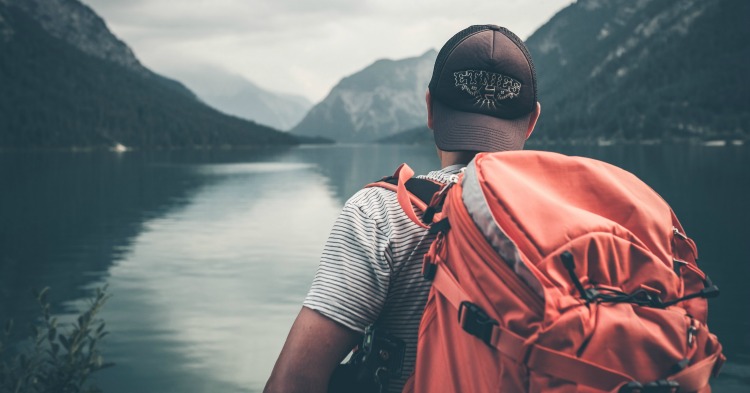
Whether you’re out for a short walk, embarking on a full day’s hiking or planning to combine your hike with some camping, a decent rucksack is one of the most essential pieces of kit you need.
Read more: Packing & Organising Your Rucksack - The Essential Guide
Hiking rucksacks come in all kinds of shapes and sizes, with lots of individual features to suit different types of hiker. With so many backpacks to choose from, selecting the right one for you can be a daunting task. So we’ve put together this handy hiking rucksack buying guide to arm you with all the information you need to choose a backpack to suit your needs.
What capacity rucksack do you need?
One of the first things you should consider when buying a backpack is how big it needs to be. Of course, this depends on what you’re using your backpack for. Are you looking for a basic daypack or will you be planning a full-on weekend hike? Will you only be carrying the bare essentials or will you be taking enough kit for overnight camping?
Backpacks are measured by the total capacity of all of the pockets in litres, ranging from 25 litres all the way up to 65 litres. Essentially, this means that you will be able to fit 25 litres-worth of gear into a 25 litre backpack.
So, if you’re using your backpack for day hikes, for instance, you would only need a pack capacity of around 25-50 litres, whereas for an overnight or weekend hike, you would need a much larger backpack with a capacity of around 50-65 litres to hold spare clothing, camping equipment, etc.
Here's a quick guide on what size rucksack you need depending on what activity you're doing:
- Running / cycling (less than a day) – 5-15 litres
- Climbing (1 day) – 30-50 litres
- Day walking (1 day) – 15-40 litres
- Multi-day walking / hiking (2-3 days) – 40-60 litres
- Backpacking / travelling (5+ days) – 60+ litres
Obviously this will differ depending on how much stuff you want to take with you, the time of year, etc, but it's a good starting guide.
Fitting a rucksack correctly
You’re going to be carrying your backpack over a long period of time, often over challenging terrain, so it’s crucial that you get the fit just right to avoid any uncomfortable hikes.
To help you find the right fit, you should consider what type of frame your backpack has. Backpacks can generally be divided into two types of frame:
Adjustable frames – This allows you to lengthen or shorten the back, depending on the size of your torso. Backpacks with adjustable frames tend to be a little heavier, but you get the added benefit of getting the perfect fit for your torso length.
Fixed frames – If you’re buying a fixed frame model then it’s a good idea to try the backpack on before you buy it. If you’re buying your backpack online, make sure you keep the tags and packaging incase you need to return it.
Most backpacks also come with adjustable back straps, and some also have adjustable chest straps, so you can adjust them to suit you and make sure your pack fits securely and comfortably around your body.
Key rucksack features to look out for:
Take a look at this front view of a rucksack to see some key features:
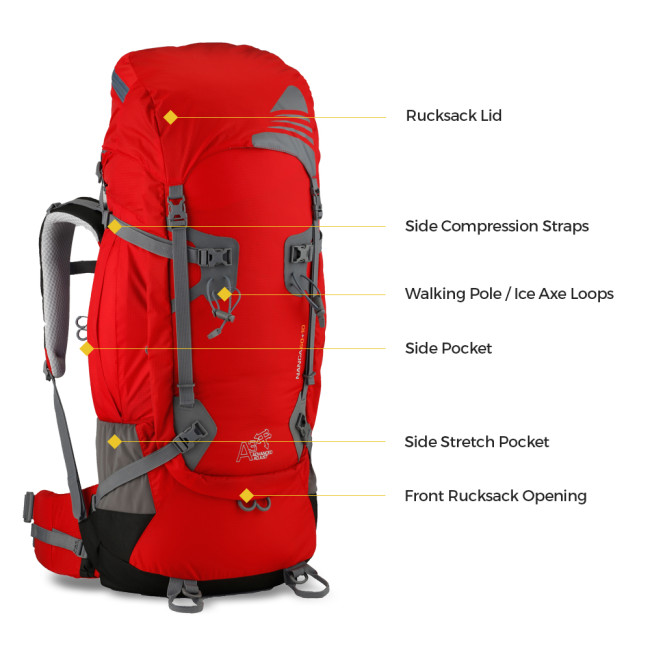
And here's the back view for some other key features:
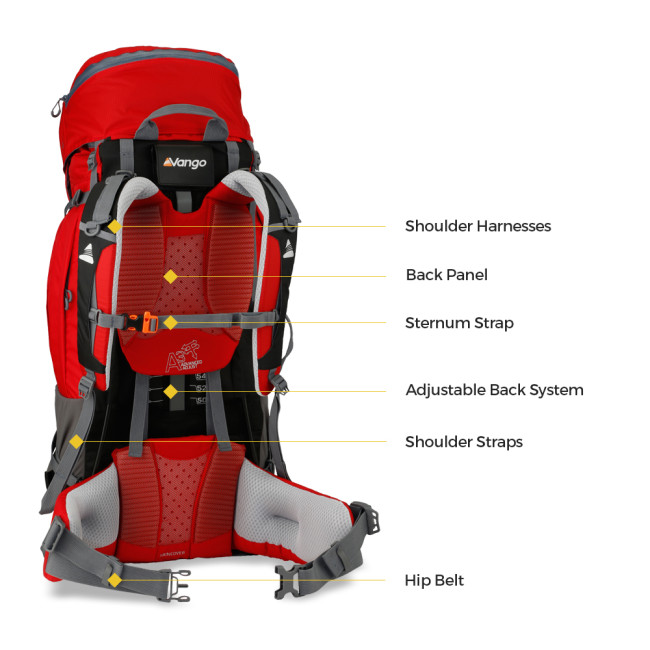
Other potential features include:
Hip belts – The majority of the weight of your backpack naturally sits on your hips, so an adjustable hip belt is a useful feature on medium and large rucksacks to provide a little extra support for your hip area.
Plenty of pockets – Multiple internal and externals pockets are great for organising and separating contents. Internal security pockets are particularly useful for stashing valuables, whilst side mesh pockets are ideal for holding water bottles.
Rain Cover – Some backpacks come with their very own rain cover, handily tucked away in an internal pocket. A rain cover is particularly useful in the unpredictable British weather to prevent the contents of your rucksack getting wet.
Hydration compatible – Many backpacks are hydration compatible, which means they allow you to add a reservoir so you can stay hydrated whilst on the move.
Attachment points – Attachment points such as clips and hooks are useful for keeping all the gear you may need, such as walking poles and ice axes, close to hand.
Reflective piping – If you’re planning on wearing your backpack during a night hike or an evening run, reflective piping will help make sure you stay visible.
Guide - read more about buying the best rucksack for hiking.
What is the best rucksack for hiking?
Winfields recommends…
Best rucksack for price - Regatta Survivor II 65L Rucksack

For the price, the Regatta Survivor II 65L rucksack is a fantastic choice. It has a whole host of great features, including an air mesh back construction for ventilation, adjustable sliding chest harness, several pockets (inside and out), and much more.
Best rucksack for space - Vango Freedom 80 Plus 20 Rucksack
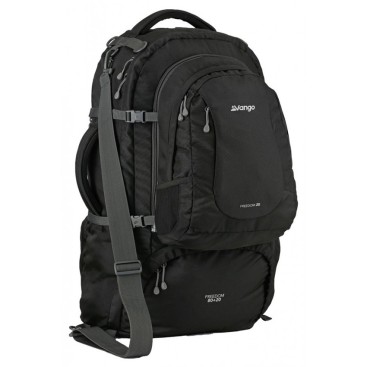
If you going on a particularly long hike or you just like to take lots of gear with you, then the Vango Freedom 80 Plus 20 rucksack has plenty of room. It features an already roomy 80L main pack but then also has a detachable, hydration compatible 20L daysack, making it ideal if you're heading off on a shorter hike from your camp.
Best rucksack for Duke of Edinburgh's Award - Vango Sherpa 60 Plus 10 Rucksack
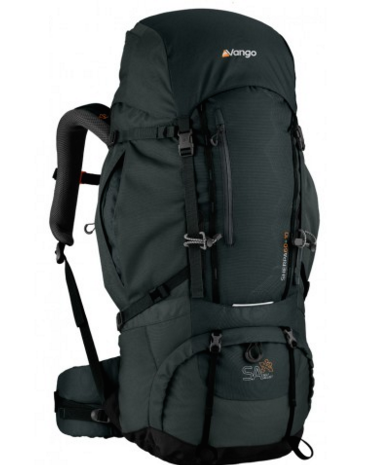
The Vango Sherpa 60 Plus 10 Rucksack is officially recommended by the DofE, and the 'Sherpa' is a firm favourite with hikers of all ability from the Vango brand. The durable components and clever features that Vango are renowned for will give you the edge when it comes to load control and performance - especially when combined with the Self Adjust back system.












